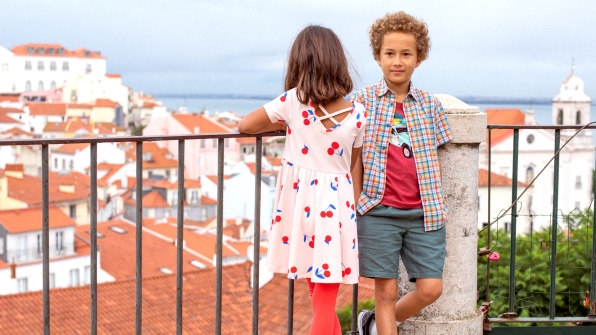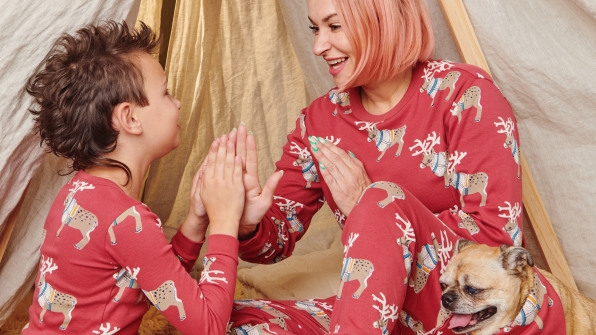Twice a year, the designers at kids-clothing label Tea Collection hop on a plane to a new corner of the globe—recently, it was Peru and Japan—in search of inspiration. The next season, onesies might feature flowers native to Machu Picchu or sweaters inspired by Kimono wraps.
It’s an unusual design strategy for a brand devoted to babies, toddlers, and young children, many of whom have yet to leave the country. But founder and CEO Leigh Rawdon believes that it is never too early to immerse kids in global design and new cultures. She launched the San Francisco-based Tea Collection in 2002 and has slowly grown the company into a business that generates upwards of $45 million in annual sales—and has a cult following among travel-loving parents. As the brand heads into its 20th anniversary celebrations next year, it is rereleasing some of its greatest hits from its archives.

Two decades ago, when Rawdon was studying the market, she observed that most baby and kids clothes were pretty generic, with lots of bunnies and ducks in pastel colors. As a mother herself, she didn’t think these garments squared with the values of many parents, who were eager to raise open-minded children who would be curious about the world around them. So she came up with the idea of creating clothes covered in patterns and prints that would pique a child’s interest in other countries.
She decided to call her nascent brand Tea Collection, referencing a beverage that is consumed in almost every culture but is appreciated in different ways, from the formal Japanese tea ceremony to Southern sweet ice tea. “It wasn’t really about giving them an education,” Rawdon says. “It was about giving them a little taste of India, Greece, or Zimbabwe. It makes those words and cultures more familiar to them, so it doesn’t feel like a distant place. I think it’s good fun for the parents too.”

Tea Collection has a team of designers that create prints from scratch. When they go on their twice-yearly trips to a different country, they take in the local art, food, and architecture. Then, rather than simply cutting and pasting local patterns onto garments, the designers translate them into prints they think will be engaging to children. For the 2021 Portugal collection, for instance, Tea’s designers were fascinated by the elaborate ceramic glazed tiles that cover everything from the walls of train stations and restaurants to churches. When they got back to their San Francisco design studio, they created floral blue prints for dresses inspired by the blue tiles; and T-shirts adorned with images of fish, octopi, and birds, inspired by the animal designs on those tiles.

Over the years, it’s been important to Rawdon to ensure the company continues to convey this passion for travel around the world. She realized that it was a little unfair that only designers got to go on these global adventures, so she now gives all employees a travel stipend that they can put toward a holiday. (A lot of this travel has been put on hold during the pandemic, but it’s beginning to pick back up now, Rawdon says.)
For the holidays, Tea’s designers were inspired by a recent trip to Sweden. They’ve come up with pajamas for the whole family featuring bears, horses and rabbits, inspired by traditional Scandinavian patterns, along with forest scenes inspired the pine and spruce trees in the north of Sweden. The brand also released special occasion outfits in traditional Nordic Fair Isle and plaid, along with an adorable hooded sweater that will make your baby look like a gnome.
Throughout all of next year, Tea Collection will roll out beloved prints from the archives. Starting in January, it will release its greatest hits from Mediterranean countries, and beginning in March, it will release pieces inspired by Southeast Asia. For fans of the brand, it’s a chance to revisit old favorites. For Rawdon, it’s a chance to remember all the corners of the globe that she and her team have explored. “We’ve covered a lot of the world over the past 20 years,” she says. “But there’s a lot left to discover.”
(45)